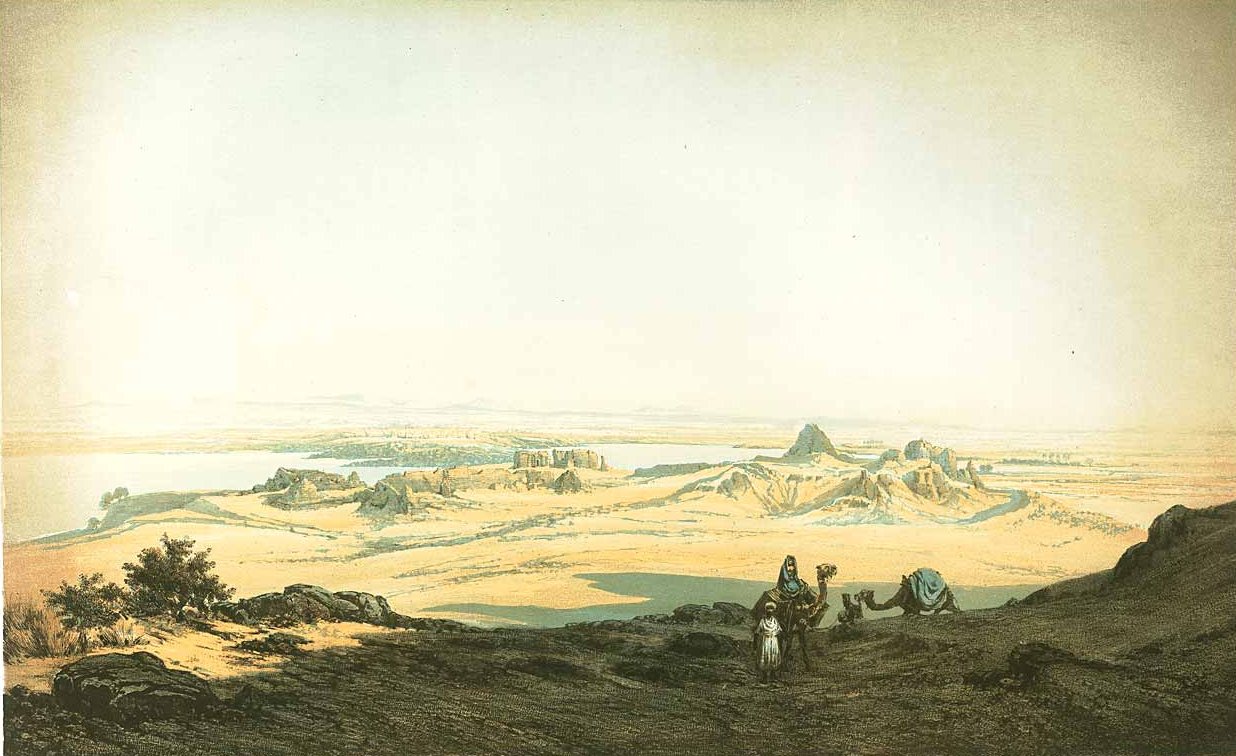Kumma (Nubia) on:
[Wikipedia]
[Google]
[Amazon]

 Kumma or Semna East is an archaeological site in
Kumma or Semna East is an archaeological site in

 Kumma or Semna East is an archaeological site in
Kumma or Semna East is an archaeological site in Sudan
Sudan ( or ; ar, السودان, as-Sūdān, officially the Republic of the Sudan ( ar, جمهورية السودان, link=no, Jumhūriyyat as-Sūdān), is a country in Northeast Africa. It shares borders with the Central African Republic t ...
. Established in the mid- 12th Dynasty of Egypt, it served as a fortress
A fortification is a military construction or building designed for the defense of territories in warfare, and is also used to establish rule in a region during peacetime. The term is derived from Latin ''fortis'' ("strong") and ''facere'' ...
of ancient Egypt in Nubia
Nubia () (Nobiin: Nobīn, ) is a region along the Nile river encompassing the area between the first cataract of the Nile (just south of Aswan in southern Egypt) and the confluence of the Blue and White Niles (in Khartoum in central Sudan), or ...
. Along with Semna
The region of Semna is 15 miles south of Wadi Halfa and is situated where rocks cross the Nile narrowing its flow—the Semna Cataract.
Semna was a fortified area established in the reign of Senusret I (1965–1920 BC) on the west bank of the N ...
, Kumma was built by the Pharaoh
Pharaoh (, ; Egyptian: ''pr ꜥꜣ''; cop, , Pǝrro; Biblical Hebrew: ''Parʿō'') is the vernacular term often used by modern authors for the kings of ancient Egypt who ruled as monarchs from the First Dynasty (c. 3150 BC) until the an ...
Sesostris III
Khakaure Senusret III (also written as Senwosret III or the hellenised form, Sesostris III) was a pharaoh of Egypt. He ruled from 1878 BC to 1839 BC during a time of great power and prosperity, and was the fifth king of the Twelfth Dynasty of the ...
(1878 BC – 1839 BC). The forts protected the border between ancient Egypt and the southern areas.
Kumma is situated about south of Aswan
Aswan (, also ; ar, أسوان, ʾAswān ; cop, Ⲥⲟⲩⲁⲛ ) is a city in Southern Egypt, and is the capital of the Aswan Governorate.
Aswan is a busy market and tourist centre located just north of the Aswan Dam on the east bank of the ...
, and southwest of the second cataract
The Cataracts of the Nile are shallow lengths (or whitewater rapids) of the Nile river, between Khartoum and Aswan, where the surface of the water is broken by many small boulders and stones jutting out of the river bed, as well as many rocky ...
of the Nile
The Nile, , Bohairic , lg, Kiira , Nobiin language, Nobiin: Áman Dawū is a major north-flowing river in northeastern Africa. It flows into the Mediterranean Sea. The Nile is the longest river in Africa and has historically been considered ...
on the eastern bank. Semna is located on the other side. Both locations are flooded today because of the Aswan High Dam
The Aswan Dam, or more specifically since the 1960s, the Aswan High Dam, is one of the world's largest embankment dams, which was built across the Nile in Aswan, Egypt, between 1960 and 1970. Its significance largely eclipsed the previous Aswan Lo ...
on Lake Nubia
A lake is an area filled with water, localized in a basin, surrounded by land, and distinct from any river or other outlet that serves to feed or drain the lake. Lakes lie on land and are not part of the ocean, although, like the much larger ...
. The salvaged temple of Khnum
Khnum or also romanised Khnemu (; egy, 𓎸𓅱𓀭 ẖnmw, grc-koi, Χνοῦβις) was one of the earliest-known Egyptian deities, originally the god of the source of the Nile. Since the annual flooding of the Nile brought with it silt an ...
is rebuilt in the National Museum of Sudan
The National Museum of Sudan or Sudan National Museum, abbreviated SNM, is a two-story building constructed in 1955 and established as a museum in 1971.
The building and its surrounding gardens house the largest and most comprehensive Nubian ar ...
at Khartoum
Khartoum or Khartum ( ; ar, الخرطوم, Al-Khurṭūm, din, Kaartuɔ̈m) is the capital of Sudan. With a population of 5,274,321, its metropolitan area is the largest in Sudan. It is located at the confluence of the White Nile, flowing n ...
.
References
* Dows Dunham, Jozef M. A. Janssen: ''Second Cataract Forts. Volume 1: Semna, Kumm''a. Museum of Fine Arts, Boston 1960. * Fritz Hintze, Walter F. Reineke: ''Felsinschriften aus dem Sudanesischen Nubien''. 2 Bände (Texte und Tafeln). Akademie-Verlag, Berlin 1989, , S. 98–102 (Publikation der Nubien-Expedition 1961–1963). * Stephan Johannes Seidlmayer: ''Historische und moderne Nilstände. Untersuchungen zu den Pegelablesungen des Nils von der Frühzeit bis zur Gegenwart''. Achet, Berlin 2001, , S. 73–80 (Achet – Schriften zur Ägyptologie A, 1). {{Castles in Egypt Archaeological sites in Sudan Nubia